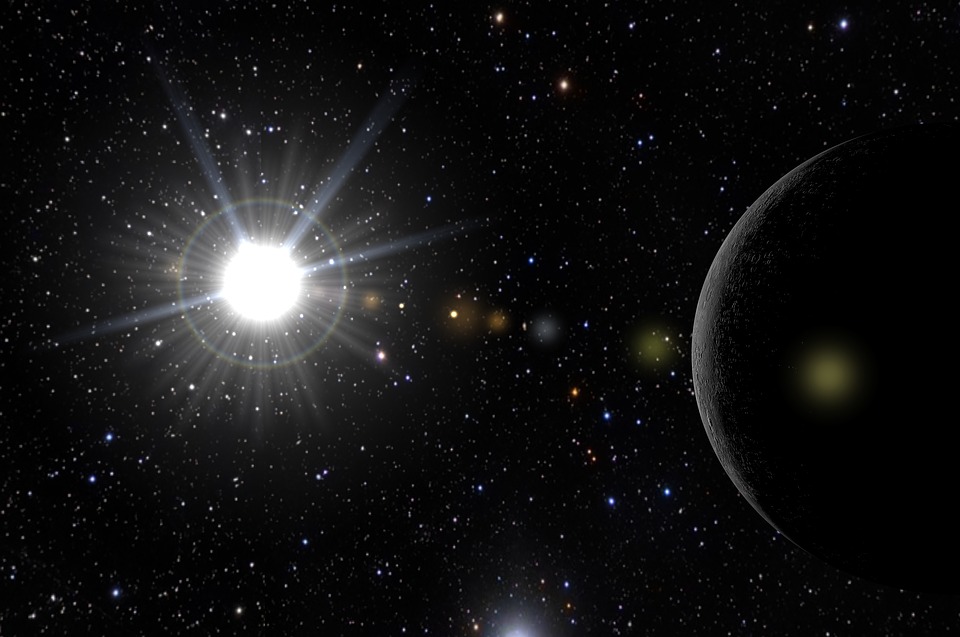Although Mercury is the nearest planet to the Sun, it also has ice cold polar regions as well. Recently, a group of researchers revealed that the ice found in these regions can mostly be attributed to asteroids.
Express reports that scientists from Georgia Tech were able to determine why Mercury has icy polar regions, based on the data collected by NASA’s Messenger Probe, which first saw the icy formations back in 2011.
There have been theories regarding the possible reason of the ice formations. One such theory is that because of the chemicals that are present in the planet’s surface that get heated by the sun’s radiation, it results in a release of water and hydrogen that later settle in the craters that are protected from the sun, and thus freeze and turn into ice.
Photos taken by the Messenger Probe show large pockets of ice within the craters of Mercury’s polar regions. It was originally believed that asteroids were mostly responsible for bringing ice to the planet and when it collided, the asteroids ended up making craters that were deep enough to shield the ice from getting exposed to the Sun.
It should also be noted that Mercury does not have an atmosphere, and thus the planet’s temperature immediately drops whenever it is not exposed to the Sun. It can go as low as -280 degrees Fahrenheit. Still, scientists believe that most of the ice, around 90 percent, is formed by asteroids, while the remaining 10 percent is a result of natural processes found on Mercury.
As far as asteroid collisions are concerned, the chances of it happening on Earth are slim but never zero. However, in order to be better prepared, asteroids have to be tracked down, but some astronomers have voiced their concern regarding Elon Musk’s SpaceX Starlink satellites which may affect keeping tabs on these asteroids, most especially the potentially hazardous ones.
Among them being Harvard Smithsonian Center for Astrophysics astronomer Dr. Jonathan McDowell. They shared that even though Starlink does not pose an actual problem just yet with the current number of satellites in the skies, it is more of a nuisance. “But Starlink is going to be a problem within a couple of years while they put up all those satellites,” said the astronomer.



 CDC Vaccine Review Sparks Controversy Over Thimerosal Study Citation
CDC Vaccine Review Sparks Controversy Over Thimerosal Study Citation  Senate Sets December 8 Vote on Trump’s NASA Nominee Jared Isaacman
Senate Sets December 8 Vote on Trump’s NASA Nominee Jared Isaacman  Astronomers have discovered another puzzling interstellar object − this third one is big, bright and fast
Astronomers have discovered another puzzling interstellar object − this third one is big, bright and fast  Blue Origin’s New Glenn Achieves Breakthrough Success With First NASA Mission
Blue Origin’s New Glenn Achieves Breakthrough Success With First NASA Mission  FDA Pilot Program Eases Rules for Nicotine Pouch Makers
FDA Pilot Program Eases Rules for Nicotine Pouch Makers  Trump Administration to Launch Autism Initiatives Targeting Acetaminophen Use and New Treatment Options
Trump Administration to Launch Autism Initiatives Targeting Acetaminophen Use and New Treatment Options  Eli Lilly’s Inluriyo Gains FDA Approval for Advanced Breast Cancer Treatment
Eli Lilly’s Inluriyo Gains FDA Approval for Advanced Breast Cancer Treatment  Lost in space: MethaneSat failed just as NZ was to take over mission control – here’s what we need to know now
Lost in space: MethaneSat failed just as NZ was to take over mission control – here’s what we need to know now  Kennedy Sets September Deadline to Uncover Autism Causes Amid Controversy
Kennedy Sets September Deadline to Uncover Autism Causes Amid Controversy  Lab-grown meat: you may find it icky, but it could drive forward medical research
Lab-grown meat: you may find it icky, but it could drive forward medical research  Is space worth the cost? Accounting experts say its value can’t be found in spreadsheets
Is space worth the cost? Accounting experts say its value can’t be found in spreadsheets  NASA Astronauts Wilmore and Williams Recover After Boeing Starliner Delay
NASA Astronauts Wilmore and Williams Recover After Boeing Starliner Delay  SpaceX Starship Test Flight Reaches New Heights but Ends in Setback
SpaceX Starship Test Flight Reaches New Heights but Ends in Setback  Ancient Mars may have had a carbon cycle − a new study suggests the red planet may have once been warmer, wetter and more favorable for life
Ancient Mars may have had a carbon cycle − a new study suggests the red planet may have once been warmer, wetter and more favorable for life 































